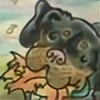HOME | DD
 blix-it —
Watercolor Stretching Tutorial
blix-it —
Watercolor Stretching Tutorial

Published: 2011-06-18 18:33:26 +0000 UTC; Views: 58783; Favourites: 1624; Downloads: 638
Redirect to original
Description
SUGGESTIONS FOR MATERIALSpaper: 140lb Arches Cold Press
paint: Daniel Smith Watercolors
ink: something that's waterproof, or it'll bleed like hell even after drying
My first watercolor tutorial discussed quality of materials, but if you don't wanna read it, then just read this: PAPER QUALITY IS FOR REALSIES. You soak and stretch computer printer paper and it won't be happy with you at all. XD High quality watercolor paper is made more with cotton than with usual paper fiber. Cotton stretches and contracts when wet! Use lesser paper and suffer lesser results!














 THANK YOU SO MUCH FOR THE DD! TO CELEBRATE, I WILL SEARCH FOR TOPICS FOR MY NEXT TUTORIAL. ^^ COME ASK SOME QUESTIONS!
THANK YOU SO MUCH FOR THE DD! TO CELEBRATE, I WILL SEARCH FOR TOPICS FOR MY NEXT TUTORIAL. ^^ COME ASK SOME QUESTIONS! -----------------------------------
Finished for contest (for the "Share the Knowledge" category.) >< I've been wanting to create this tutorial for ages! Thank you for the motivation.
This is the final painting that was being stretched in the tutorial:
May your watercolor paper never ripple again. Good luck.





Feel free to post questions in the comments. c:
Related content
Comments: 136

Interesting! I've never heard of stretching watercolor paper with staples!
👍: 0 ⏩: 0

This is very helpful! I have a question, is it possible to soak a paper that you've used ink on, instead of just pencil? I like using ink to line my drawings, because I'm a big fan of thicker lines. I imagine ink would wash off, though.
👍: 0 ⏩: 1

If your bottle of ink says waterproof on it, it will pretty well stay on the paper! Some will rise when soaking, especially in huge heavy ink areas. But it mostly stays put.
If the bottle does not say waterproof, test at your own risk. 
👍: 0 ⏩: 1

Thanks so much for the quick reply!
👍: 0 ⏩: 0

For some reason I never fav'd this....... no idea why because I reference it often!! I've yet to try this but I have plans to do so soon. I just love the really wet-into-wet technique, I have never tried doing it after soaking the paper like this. I hope I can make it look this awesome!!! 

👍: 0 ⏩: 0

Thanks for recommending independent stores instead of the big craft stores for framing. I work at one of those stores, and our framer usually has to do other things around the store and can't devote a decent amount of time to orders day to day. Customers often have to wait at least two weeks for a piece to be finished. I'm kind of assuming a frame shop is able to work more specifically on their framing orders.
👍: 0 ⏩: 0

Thank you so much for this! I called myself doing the tape method and the tape came right off and now the painting keeps rippling
i am so trying this
👍: 0 ⏩: 0

This was really helpful--I'm going to delve into watercolors this summer and I would've been so discouraged with the ripples in my work if I hadn't read this tutorial beforehand! Thanks so much!
👍: 0 ⏩: 0

Ripples! Why didn't any of my teachers ever tell be about this?
When you're done painting do you phonograph or scan your pictures, and for either one how do you do it?
👍: 0 ⏩: 0

Wanted to say thanks for making this tutorial! It's so helpful, and I finally have the bravery to pick up watercolors again. I'm so proud of the first piece I've started on, and when I posted the WIP, I included a link to this tutorial in the description.
It's never said enough, so THANK YOU!!!
👍: 0 ⏩: 0

I have the easiest method for stretching watercolor paper, pretty much costs you a $1.50 for about 2 rolls of watercolor paper. Keep in mind, those who buy 300# paper are hacks!, there is no need. Watercolor is the bluegrass of the arts, so much better and cheaper, and the end product... Amazing. I will give you my secret if you only ask... jessecomeau80@yahoo.com
👍: 0 ⏩: 0

I was loving this tutorial to pieces. Then I got to the end. AND SAW THOSE PICTURES FROM D 0 0 R: Toilet Genie.
GAH!
That's so awesome! I love that comic!
👍: 0 ⏩: 1

Your comment makes me happy. Firstly that the tutorial is enjoyable, but mostly that you recognize TG and it has made you like the tutorial more. ^^ Thank you very much for that. Thank you for reading TG.
👍: 0 ⏩: 1

Aww you're welcome! I absolutely LOVE TG. I've been reading it since the first couple of pages. It's amazing, and I look forward to every new release!
Also, thank you for posting this tutorial, because I knew there was something called "stretching" that you should do to your paper to stop the wrinkling, but I didn't know how to do it!
Also, knowing that you do all those amazing TG drawings with watercolors has made me want to take it up again!!
👍: 0 ⏩: 0

May I ask how you scan and edit your paintings? I can never get them to look high quality
👍: 0 ⏩: 1

Just a regular old scanner (Epson Perfection V30, yes I have to scan in pieces for big works) and photoshop (levels, layer filters, and color variations usually get the contrast and colors back to how they were in the original painting.)
👍: 0 ⏩: 1

So very, very useful! Thanks a lot for taking the time and explaining this very important step!
👍: 0 ⏩: 0

Hello!
As part of Project Educate: Fan Art Week 2011 , we had the honor to feature your work in Tutorials Feature - Traditional . Many thanks for providing Traditional Fan Artists with awesome resources like this!
👍: 0 ⏩: 0

thank you for this tutorial so much! I even took a watercolor class in college and the teacher never taught us how to stretch any of our paper to stop rippling.
👍: 0 ⏩: 0

I was also taught the tape method for stretching watercolor paper in college. Honestly, most of the students combined the tape with the staple method.
I could complain for quite awhile about the tape. It was an art form in itself and I got it to work a few times, but it was always unpredictable.
Ah, this was a refreshing blast from my past as well as a great reference for new tricks. I had never painted on it before the paper was dry. For the art tape, it's better to wait for it to dry first before adding any more layers of water and pigment.
👍: 0 ⏩: 1

THAT WAS THE THING ABOUT THE TAPE. There was no science to getting it to work. It just did or didn't depending on how fickle it was feeling.
And that was the OTHER thing about the tape. Too limiting. Too much patience required. I WANT TO PAINT NOW.
👍: 0 ⏩: 1

Oh yeah... the tape was awful, but stretched watercolor paper is the only way to go! I knew people who just cheated by buying 300 lb watercolor paper when all they needed was 150 or something...
Mmm... 300 lb watercolor paper... *drools* Oh how I miss thee....
*sighs*
👍: 0 ⏩: 0

thank you so much. my biggest pet peeve is when i can't press out all the wrinkles in my painting, so this is SUPER helpful.
👍: 0 ⏩: 0

thats a brilliant idea, I never thought of that
👍: 0 ⏩: 0

ahhh this is wonderful, definitely fav-ing so i can use it later!!
👍: 0 ⏩: 0

Congratulations once again on your Daily Deviation! You've been featured in the August 2011 Resources DD Summary . Thanks for sharing your resources with the community!!
👍: 0 ⏩: 0

After I watched the pictures in this tutorial and read every single line of all the tutorial you provided I have one question.
What is "ripple" 
👍: 0 ⏩: 1

[link] It's when the paper becomes wet, but it doesn't try flat again.
👍: 0 ⏩: 1

Guess I wasnt ironic enough
👍: 0 ⏩: 0

Thank you for this - somehow, I never realized that you could just staple down the paper! 
Now I feel stupid
Thank you for putting this together and sharing it with us!
👍: 0 ⏩: 0

What are "strips of mat board"?
Other than that, though ... WOW. Like, seriously wow. I've wanted to learn how to paint with water colours forEVER, and I didn't even know that you were supposed to do this!
I have to go and buy more stuff, I feel.
👍: 0 ⏩: 0

I really like your work and I have just one question. Besides mat board, is there any other more accessible or mundane substitute to use?
👍: 0 ⏩: 1

To use for what? For the stapling and stretching process? Or for matting an image?
👍: 0 ⏩: 1

Oh, yea, for the stapling process haha...
👍: 0 ⏩: 1

I don't really know any alternatives to mat board for the stapling part. oAo But you could try just going without it, and if your paper is good, it should be pretty alright.
But it's pretty easy to come by mat board. If you go to a framing shop, they've usually got scraps that they'll just give you or sell for very cheap if you tell them what you want it for (stretching watercolor paper.) Or print out this tutorial so they can visually see what you're wanting.
👍: 0 ⏩: 0

Nice tutorial. I hated dealing with the tape when doing watercolor; one of the reasons i haven't done one in years! Maybe I'll give this method a try sometime.
As a framer, I can tell you that one of the big differences in cost of mats is quality. Sure, you can get cheaper matting at indy framers; but often it's because they're using non-archival mat boards and backing. Over time those cheaper boards can cause serious discoloration and paper damage.
Also, a rippled watercolor can be flattened in the heat press used in frame shops for drymounting (obviously without the adhesive film).
👍: 0 ⏩: 1

woah there, don't be getting down on indie framers. A lot MORE times, they're just more intelligent about their inventory and fairer about their prices. Michaels and similar stores aren't successful because of their excellent quality standards. They're successful because of their big box advertising budget.
👍: 0 ⏩: 1

Note that I said "often" not "always". I've worked for both, and I have nothing against indy framers. But any time you get a "great deal", you should make sure it's not because of lower quality materials. And for the record, one of the reasons that Michael's is more expensive is that they use no paper mats, no cardboard and no cheap foam and glass products in their custom framing; at least not at the store I used to work at.
👍: 0 ⏩: 0

Helpful tutorial 
I didn't know you could use staples, in most watercolour books I've read they recommend gummed tape, however I used packaging tape because it was wide enough to stick the paper down but it ripped the edges when removed >.>
To flatten the paper that was ripped I just get a smooth, flat object (e.g. fingernail) and rub it down so that it's flat again
👍: 0 ⏩: 0

Nice tutorial, man that throws me back to watercolor class. Had to buy a friggin' staplegun for that class. Also carried around a large plank of wood with stretched paper on it and lug it to and from campus. *laugh* I was also glad they kept to horizontal tote bags to accommodate the wood/paintings. They switched to vertical later and I felt bad for all short art students. *laugh*
For reals, though, very nice tutorial. Especially for people new to srs watercolor and the DEFINITE need to stretch the paper.
👍: 0 ⏩: 0

Omigosh, I remember seeing the pikachu painting when my sister and I saw you in San Japan!
Eeeeeee thanks for sharing your watercolor secrets!
👍: 0 ⏩: 0

A-a way where I don't have to use water tape...ever... again?
\o/!!!!!!!!!!!
I LOVE YOU FOREVER <3!!!
👍: 0 ⏩: 0

Blix, oh my goodness, you made a tutorial.
How did I miss this.
I want water colours now.
Congrats on the DD <3
👍: 0 ⏩: 0

Does all this stretching and saturation affect how much water the paper gobbles up later, too? I tried some hot press I bought on accident in Figure Drawing a while ago and I could barely get three strokes in before having to get more paint. Maybe it's like feeding it, if you give it a big appetizer it won't want as much later. >.>
👍: 0 ⏩: 2

depends on what brand and what weight of paper and what brushes you use.
But I don't ever really use hot press, either. 
Also, nice brushes make a difference - they'll hold a lot of water, so you don't have to go back and forth as much.
👍: 0 ⏩: 0

Saturating the paper with water before you work with it helps, even if you work with it AFTER it has dried completely again. Paper is treated with chemicals called "sizing" to help dry it and homogenize the surface in the factory before it is shipped out. Sizing makes the paper dry more quickly and evenly, which can be a problem if you want to work on it with wet materials (not a problem with dry materials such as charcoal). Soak it for a few minutes in water before you try to paint on it.
👍: 0 ⏩: 1

Your avatar is distracting me from your advice. o_O
But yeah, we tried doing just water washes on it after the first test 'cuz by then my prof was interested, too, but just painting water on probably isn't the same as a good soak. Guess I'll be using the studio sink more!
👍: 0 ⏩: 1
| Next =>
























